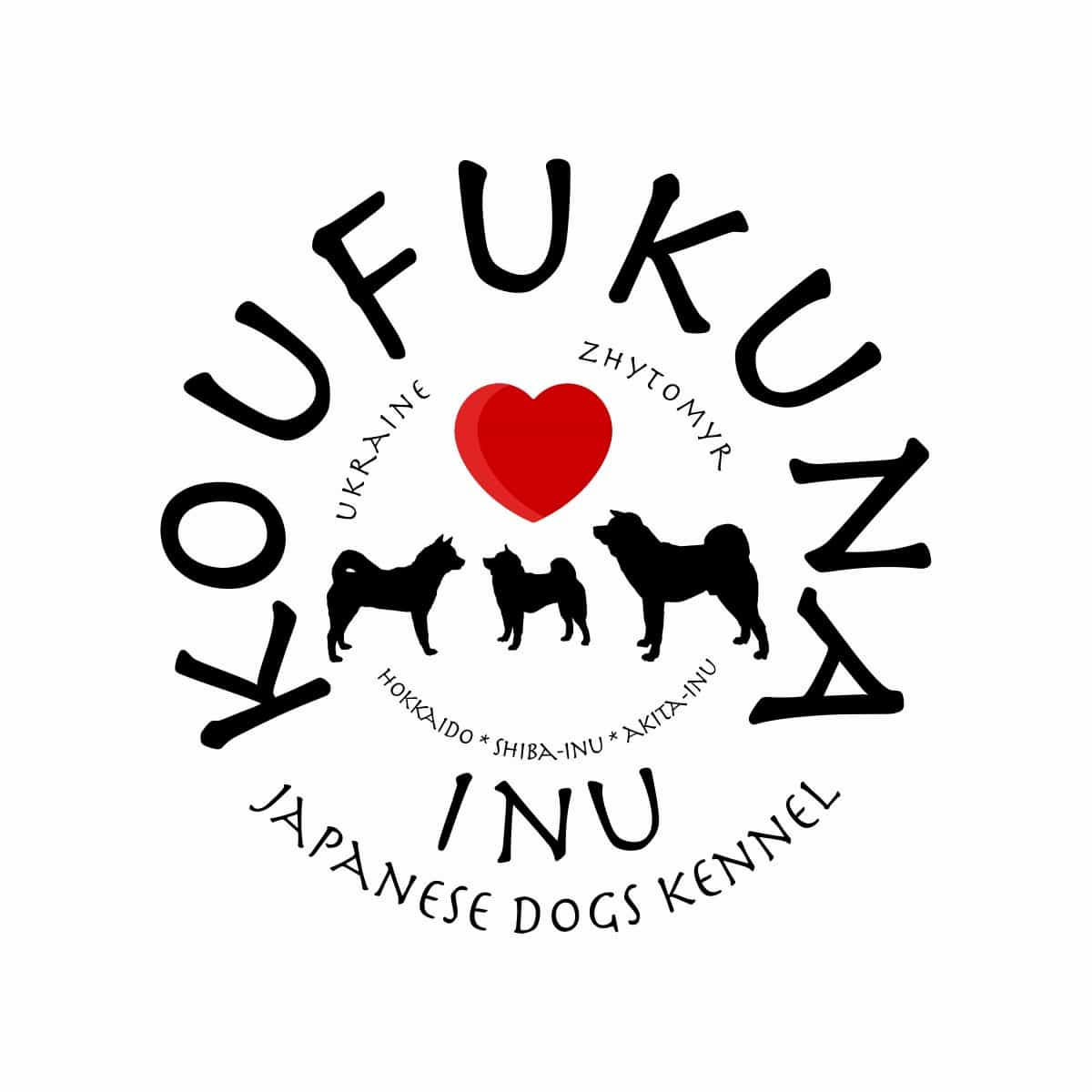


Hokkaido dog (jp. 北海道犬, Hokkaidō-Inu or Hokkaidō-Ken), —
a breed of hunting dogs, one of six aboriginal spitz-type dogs in the register of the Japanese canine organization for the protection and preservation of native Japanese breeds - Nihonken Hodzonkai (Nippo).
Used for hunting, guarding or as a companion dog.
Hokkaido is the native dog of the prefecture of the same name in Japan.
Outside of its native country, the breed is very rare, although the popularity of the breed has been growing in recent years.
Other names for the Hokkaido breed:
- Ainu-Ken;
- Seth;
- Ainu dog;
- Hokkaido-Ken;
- Hokkaido Inu;
- D-Ken (jp. 道犬), so often the name is abbreviated in Japan.
Hokkaido is a medium-sized dog with a strong build. The most common colors are red and white.
Dogs of the Hokkaido breed are smart and quick-witted, loyal, obedient, frisky and courageous, have great endurance, while showing dignity, nobility and tenderness, their movements are light and energetic, and thanks to their coat they are adapted to harsh snowy winters.
Traditionally in Japan, the Hokkaido was used as a working breed, playing the role of a pet and a hunter.
This breed of dog is incredibly intelligent and highly trainable.
However, if the dog is not properly socialized, Hokkaido can be dangerous to strangers and other animals.
With the right training and socialization, the Hokkaido becomes a very devoted and loyal family member.
Hokkaido - the history of the dog breed

It is believed that the ancestors of the Hokkaido breed were medium-sized hunting dogs Matagi-Ken, who accompanied one of the most ancient peoples of Japan - the Ainu.
The Japanese taught dogs to hunt with them long before the invention of weapons. A fearless breed, these medium-sized dogs will challenge even large bears. There is evidence that the Hokkaido were trained to help fish for salmon.
It is believed that the dogs crossed to Hokkaido along with the Ainu from the Japanese island of Honshu when they were driven north by the arrival of settlers from the Korean peninsula.
It is generally accepted that Hokkaido has more genes from the ancient Japanese dogs that existed in Japan during the Jomon period (10 thousand years BC - 300 BC).
Later, during the Yayoi period (300 BC - 250 AD), Hokkaido dogs were crossbred with other dogs brought from across the sea, but the isolation of the island helped to preserve the genetic characteristics of the breed, and avoid much influence from others. breeds.
Research has shown that Hokkaido shares DNA with the Ryukyu Ken of Okinawa, who are thought to carry more genes from the original dogs of the Jōmon period.
The genetic makeup of Hokkaido is relatively safe to cross with other dog breeds. Many Hokkaido dogs have a blue-black tongue, which may indicate their relationship to Chow Chow or Shar Pei dogs.
The Ainu passed stories by word of mouth, and several legends featured dogs. In the legend of the birth of the Aini people, the princess was cast ashore on a deserted beach. As she wept because of her plight, a white dog appeared and brought her food. From that day on, the dog lived with her, and one day they had a child. The boy grew up strong and powerful, and became the progenitor of Aini.
The breed originally consisted of several bloodlines named after the Ainu settlements from which they originate, the most famous of which are Chitose, Hiratori, Atsumi (Azuma), and Yuwamizawa.
Today the Chitose line is the only true line left, and the other part of the breed is a mixture of all the original lines. Smaller white dogs with small ears and broad foreheads were common in the Chitose line. In comparison, the Atsumi line had an abundance of brindle dogs with more pointed muzzles.
There is nothing artificial in this breed of dogs, just the Japanese selected the strongest, hardiest, smartest and most courageous puppies from each litter. The new generations were better than their parents. This is how the Ainu-ken appeared, which means the dogs of the Ainu people, which later received the name Hokkaido Dog.
Thus, experts believe that the Hokkaido is the oldest dog breed in existence and the most primitive of all Japanese dog breeds.
In 1869, the British zoologist Thomas Blankiston first classified the Hokkaido-Ken dogs in Japan for the English-speaking world.
Until the 20th century, this breed was small even in Japan.
In 1902, these Hokkaido participated in an operation to search for survivors of a military expedition caught in heavy snow in the mountains of Hakkoda. In the rescue operation, the talents of Hokkaido were rightly noticed and highly appreciated, and they began to be used not only in hunting, but also in the army and police.
However, population numbers continued to be poor and Hokkaido was classified as a living natural monument by the Japanese government in 1937.
The Ainu dog has been recognized as a "rare protected law" by the Japanese Ministry of Education. Then the official name of the breed Hokkaido-in was approved. However, the Japanese still almost always call these dogs Hokkaido-Ken.
During the Second World War, having received special training, Hokkaido was used to transmit reports and locate enemies.
In general, during the war years, the modest population of Hokkaido declined even more, leaving only a few animals bred in the imperial palace.
Japanese cynologists have made a lot of efforts to revive the breed.
By 1950, the number of Hokkaido dogs reached pre-war levels. But still, these dogs, even at home, are a rarity. For a long time there were bans on the export of representatives of the breed from Japan.
Hokkaido was recognized by the Fédération Cynologique Internationale (FCI) in 1964 as a Spitz and Primitive type breed, a subgroup of Asian Spitz and related breeds.
In 2007, the snow-white Hokkaido appeared in an advertisement for the Japanese telecommunications company SoftBank Group, after which the popularity of his breed increased.
There are two main breed registries: the Hokkaido Ken Hozonkai (Hokkaido Dog Conservation Society) and the Hokkaido Ken Kyoka (Hokkaido Dog Association). There are very few registered outside of these two Hokkaido clubs. Up to 1000 dogs are registered annually.

Hokkaido dog - Appearance

Dogs of the Japanese breed of medium size. Hokkaido were bred in their homeland due to their working ability and hunting skills.
Hokkaido are very similar to their countrymen Akita or Shiba, in size they are something in between. The growth of males is 48-51 cm, weight is not more than 30 kg. Bitches are smaller than males.
Hokkaido are proportionately built and strongly built, their figure almost fits into a square. Dogs have a strong skeleton and developed muscles.
The breed has a moderately broad, deep and well developed chest, slightly sloping shoulders, a tucked up belly and a thick curled or crescent-shaped tail lying on the back.
Hokkaido is characterized by triangular, erect ears tilted slightly forward, a powerful and muscular neck, high set and pronounced withers.
The limbs are strong, well developed, the paw pads are hard and elastic, the claws are black or dark in color.
Hokkaido wool
The Hokkaido NIJUUHIMOU (にじゅうひも) is a double waterproof thick coat, of medium length, consisting of a tough coarse outer protective layer of wool and a thin thick undercoat shed depending on the season.
The hair on the tail is much longer than on the body.
Thanks to their coats, Hokkaido are able to withstand extremely low temperatures and work effectively in heavy snow or blizzard conditions.
However, as you may have guessed, the Hokkaido coat requires a fair amount of maintenance. For example, you should brush your dog at least twice a week to prevent the formation of scaly fur.
Dogs shed generously. During shedding, you will need to brush your dog once or twice a day to remove excess hair.
Dry shampoo baths are also sometimes encouraged.
But in general, Hokkaido are considered to be easy to keep, and can cope with very cold climates and do not do well in hotter regions unless they spend most of their time in cool air.
They are perfectly adapted to live on the street, and may well live in an apartment, with easy care.
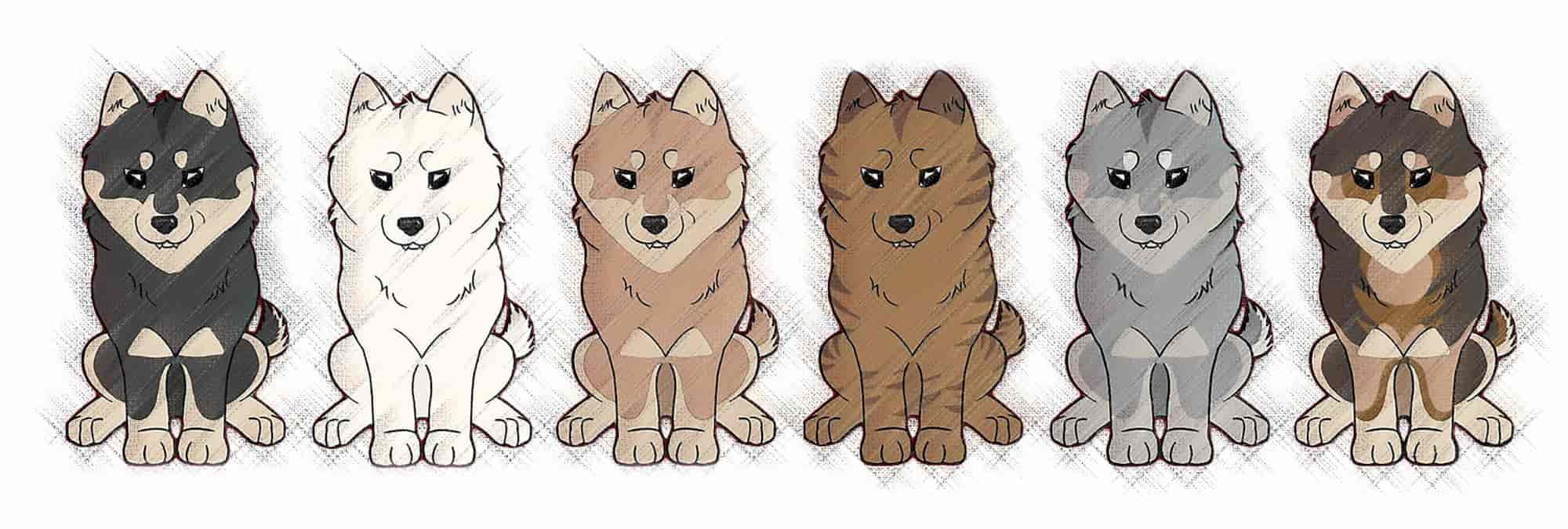
Hokkaido Breed Colors

The breed has 6 colors: white, red, black, brindle, sesame (a mixture of red, black and white hair) and wolf gray.
The most popular color in Hokkaido is white. White Hokkaido are rare, but some live in Europe.
Reds and light reds are the most common colors among this breed.
Black and tan, sesame and brindle are rare, almost impossible to find outside of Japan.
The high quality Hokkaido sesame color is not sold in Japan because the breeders keep it for themselves.
Hokkaido may have blue spots on the tongue, which is acceptable by the standards, and indicates a distant connection of the breed with the Chinese Chow Chow and Shar Pei dogs.
The Hokkaido head has a well-defined stop, with a broad, slightly flattened forehead and a wedge-shaped muzzle ending in a black nose, while pink or brown pigmentation is acceptable in white dogs.
Dogs of the Hokkaido breed have dark brown small eyes, widely spaced and almost triangular in shape.

The nature and temperament of the Hokkaido breed
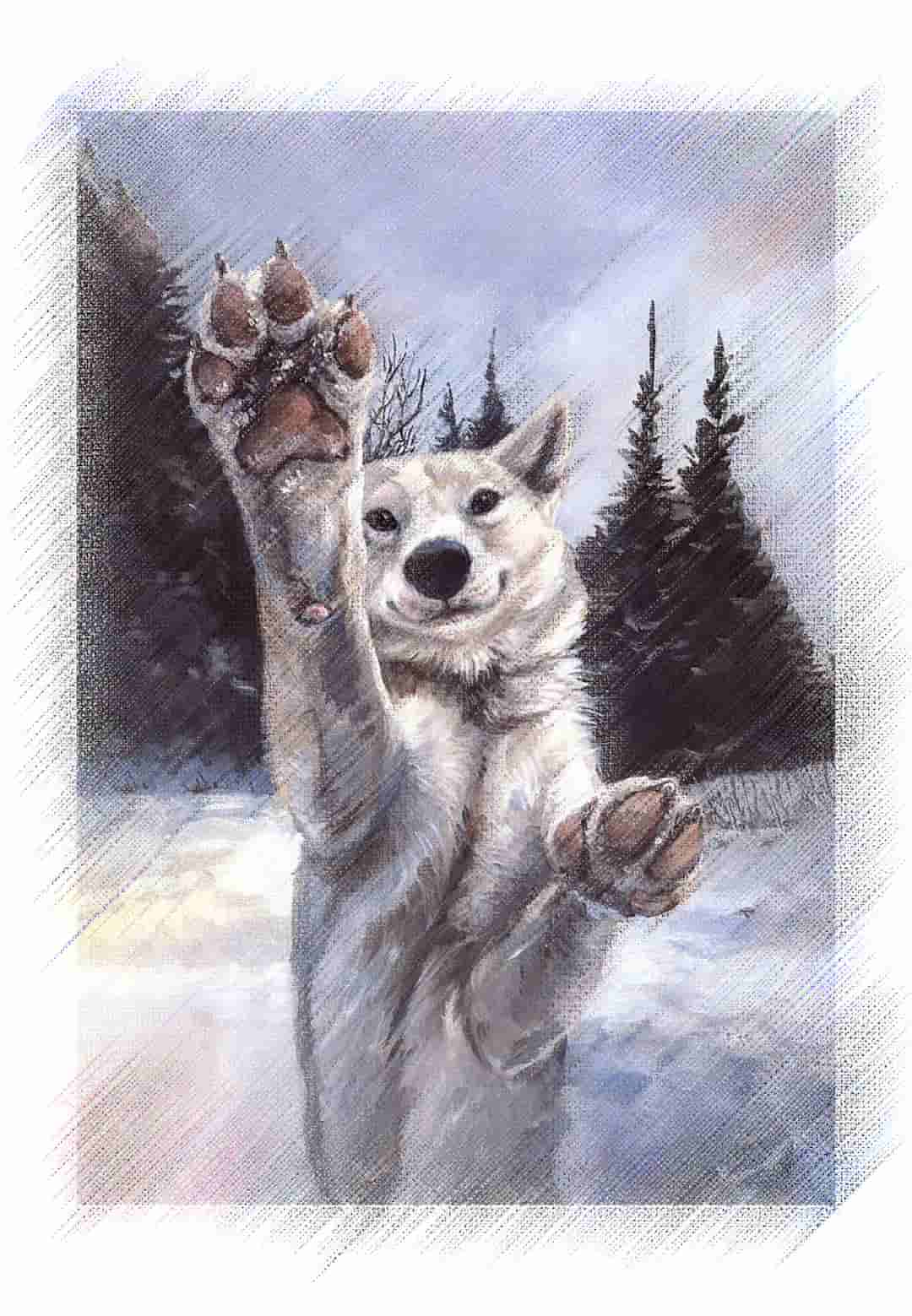
In Japan, Hokkaido is said to be a dog with a fighting heart, and on the internet they are often described as fearless hunters with a great sense of loyalty. However, Hokkaido dogs also have many other advantages and excellent qualities that make them excellent companions, loyal friends and reliable protectors.
One of the best ways to describe Hokkaido is that they are extremely loyal and fearless, but if necessary, a Hokkaido dog will go to any lengths to protect their loved ones. Hokkaido will not hesitate to destroy any predators.
Hokkaido is famous for its bravery. Although not all of them are still used for bear hunting today.
Despite their strong character and aggressiveness, they are calm and gentle with their family, and will listen to their masters when ordered to.
The Hokkaido dog is a very loyal and affectionate breed, especially towards its owners and family. They have many wonderful qualities such as alertness to their surroundings, playfulness and intelligence.
They like to go out and play, but they stop abruptly if they get bored with the game. These dogs are very mobile, as they were first taught to hunt and search for prey.
Hokkaido do not like loneliness and peace
Hokkaido is very attached to its owner. When left alone, they develop a sense of anxiety very quickly. Hokkaido does not like a long separation, being alone can begin to behave destructively and aggressively. Try to give your Hokkaido enough time to make it happy.
Hokkaido is highly intelligent and driven, a combination that produces positive results in training and makes training easy.
Hokkaido bark from time to time, as they are always alert and able to notice anything out of the ordinary. Representatives of the Hokkaido breed can howl, being happy or excited.
Hokkaido is very sensitive to the mood of the owner and is ready to do anything for him.
Hokkaido has a strong sense of hierarchy. Dogs of the Hokkaido breed recognize the authority of the owner and are traditionally attached to one person. Other members of the family are treated with coolness, but friendly and will, if necessary, patronize and protect them.
They do not like strangers, but will not be aggressive or hostile if approached politely. Hokkaido does not make contact with strangers, preferring to remain suspiciously and attentively at a distance.
Hokkaido are excellent guard dogs and take care of their families.
Despite the fact that Hokkaido can be aggressive towards strangers, in recent years representatives of the breed are increasingly acting as companion dogs.
These vigilant dogs can guard and defend a home if they are given free rein. That's just the role of a dog on a chain, they will not fit. Free Hokkaido will not put up with such a life and will find a way to escape.
Hokkaido know how to handle children.
This beautiful breed can make an excellent playmate with children, especially if raised with them or properly socialized at a young age.
Although he is a determined hunter, protector and watchdog, he has all the qualities of a well-behaved family companion and a great fondness for the owner.
Hokkaido get along in houses of any type, from singles to large families.
They are attentive to others and absolutely loyal when properly trained, and this makes them a dog suitable for many people or families.
Hokkaido is an intelligent and social animal. Dogs love spending time with you and your Family and need a variety of play activities to keep them happy.
At the moments of the games, Hokkaido becomes like an active, sweet and family Labrador.
Hokkaido Born Hunter
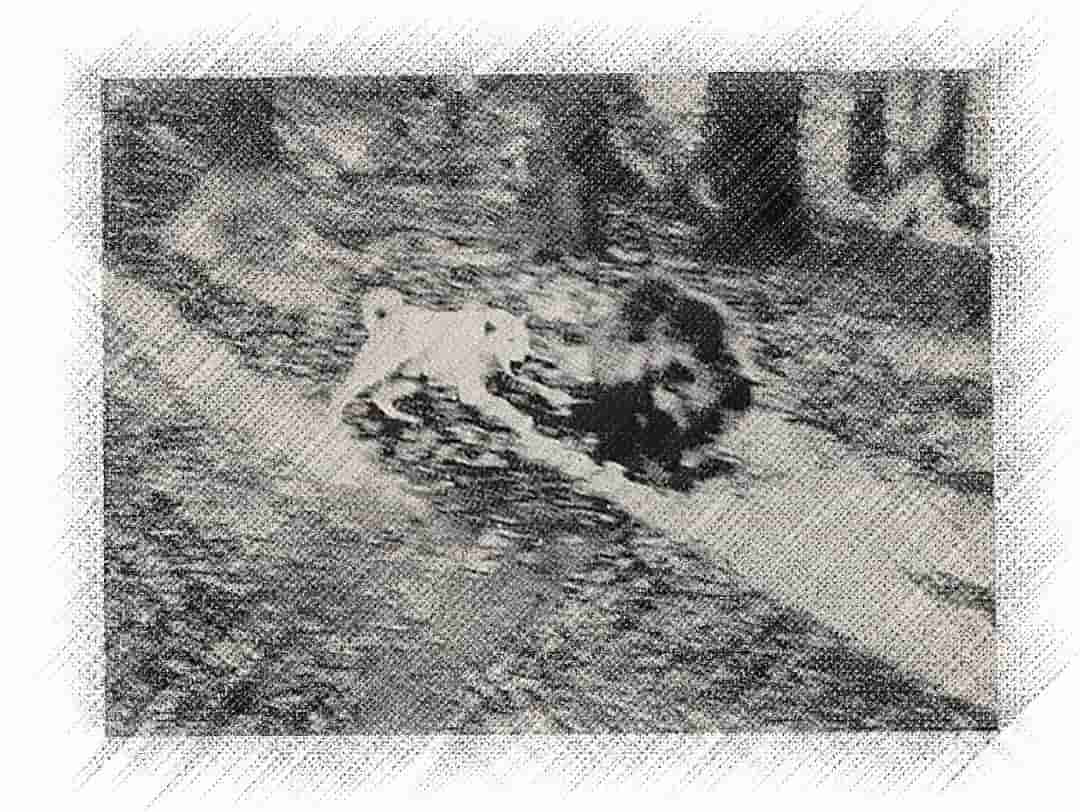
Although the Hokkaido has an innate, extremely strong hunting instinct, early socialization shows good behavior with cats and other small animals considered part of its "pack", otherwise the Hokkaido may kill small animals if not weaned from it out of puppies.
Even now in Japan, Hokkaido are used in hunting kennels and, together with their owners, control the populations of wild boars and bears. Moreover, hunting tests are held at breed shows in Japan, where dogs are shown a live bear and their movements, reactions and hunting instinct are evaluated.

He has an innate sense of direction and smell, and therefore he can return to his master, no matter how great the distance.
In the hunting field, he displays great strength, endurance, and accurate judgment based on his innate sense of smell. It uses special aiming signals, including a characteristic howl, long and short bark.
On the hunt, they are reckless and boldly engage in a fight with a bear weighing 300 kg, and will take risks to protect their master, despite the difference in size, while they have a balanced character.
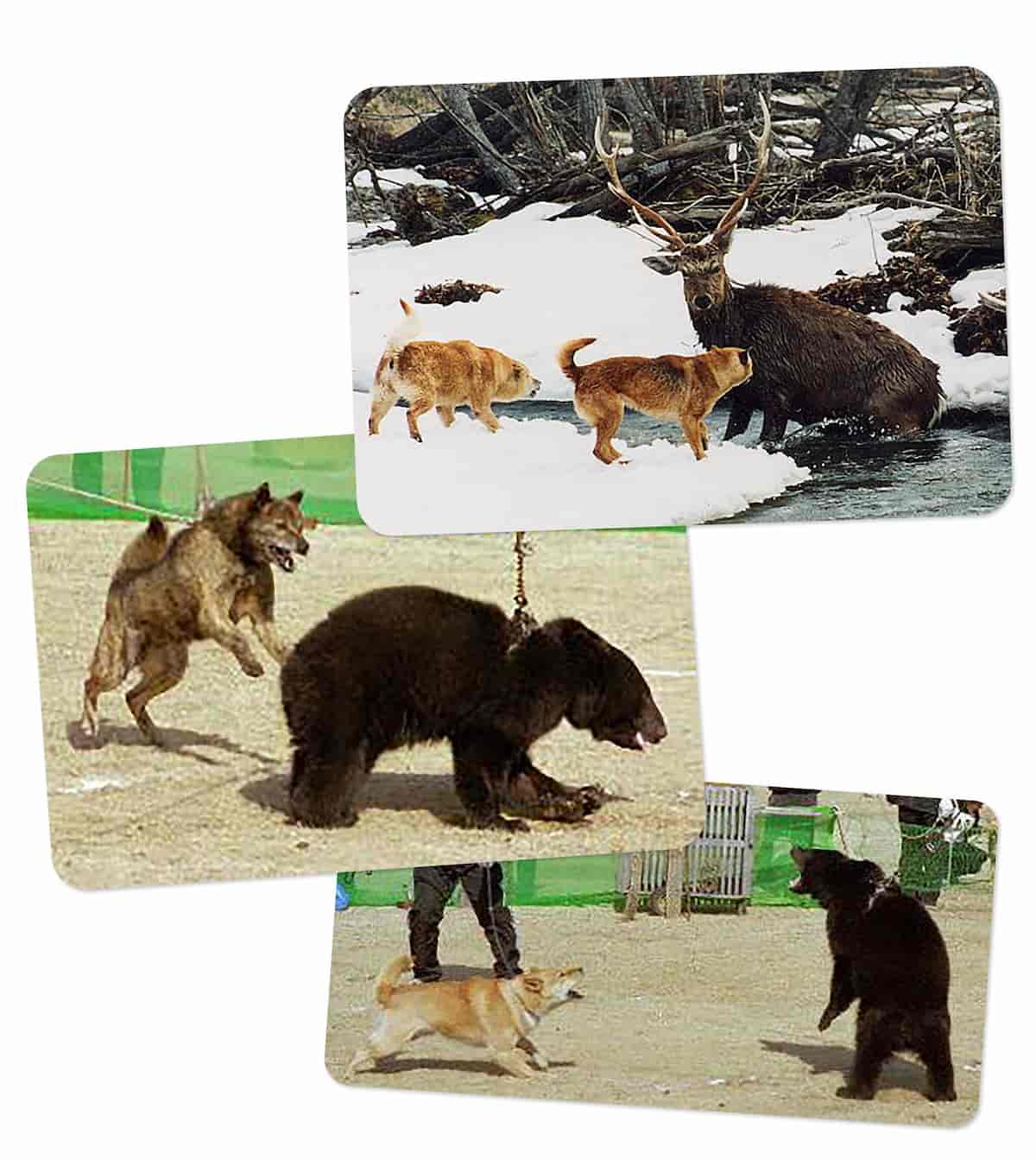
They have their own fighting style against the Hokkaido brown bear or Higuma. The Hokkaido dog attacks from the bear's back, then bites and holds the flesh of its neck until the bear retreats. Therefore, in Japan, in Hokkaido, its cruel and merciless nature, used during hunting, is valued.
Hunting dogs are lovers of vocals, but Hokkaido as a pet is reluctant to display such habits during training.
Since the Hokkaido is not widely distributed outside of Japan, the temperament of the Hokkaido solely as a family pet is still being formed.
Temperament will vary depending on region of origin and upbringing.
A Hokkaido raised as a pet can be different from the more primitive temperament that dogs exhibit in hunting kennels.
Hokkaido dog - care and maintenance
In general, taking care of Hokkaido will not give you much trouble.
Dogs are unpretentious, their content is not much different from other dogs.
The thick double coat helps the Hokkaido to endure cold weather well and live outdoors. Hokkaido keep themselves clean, like cats, like most Japanese dogs.
The size of Hokkaido allows them to live perfectly in apartments and houses if their exercise needs are met, but a large spacious house with a yard or a nearby park where they can walk and play is better.
The Hokkaido dog is contraindicated in hot and humid climate, as well as long exposure to the sun during the hot season.
In summer, the max comfortable room temperature and humidity ranges from 25 to 26 degrees Celsius, and the humidity is about 50%.
Since it is a dog native to Hokkaido, it is strong against cold but weak against heat. Hokkaido dogs, covered with thick hair, are much more susceptible to heat and humidity than humans.
It is very important to take action if Hokkaido lives in a hot climate:
- Make sure Hokkaido can drink water, especially in summer.
- To create a cool atmosphere, use a fan or air conditioner.
- Even if Hokkaido lives in an outdoor enclosure, we recommend that you temporarily leave it in a cool room.
There are cases when, due to the heat, the molting process did not end in Hokkaido, and skin diseases also developed.
Try to avoid such problems in advance.

Active range or large aviary
Before adopting a Hokkaido dog, make sure that you can fully provide a living environment that will fully satisfy the athletic abilities of Hokkaido dogs.
Being active dogs, Hokkaidos need daily exercise, otherwise they can focus their boredom on chewing on things and digging in the ground. Hokkaido love to dig holes.
If you regularly give them the right exercise, they will be calm and relaxed even indoors.
Walking Hokkaido requires at least an hour, twice a day.
Hokkaido is ideal for people with a lot of physical activity.
With Hokkaido, you need to run and play actively. General jogging, cycling, hiking, etc. are great.
Hokkaido dogs are a breed of dogs that are not suitable for a leisurely walk in the park next to the owner.
Lack of physical and mental exercise is a great stress for the Hokkaido breed, as well as the risk of obesity!
Stress is the cause of all diseases of any breed. No matter how healthy a dog is, it cannot live long under stress. In order for Hokkaido dogs to stay healthy, it is important to prepare an environment that suits their temperament and build.
Be careful with Hokkaido in nature without a leash: smelling wild animals, they quickly get excited and stop accepting commands.
It is also dangerous to let Hokkaido off the leash in the streets. Therefore, it will be reasonable to visit a fenced dog area.
The recommended option for living in Hokkaido is a large outdoor enclosure or a house with a well-fenced yard.
It is under such conditions that dogs are bred in Japanese kennels.
Just don't lock Hokkaido in an enclosure for days or months. Being alone for a long time will not lead to good consequences.
NOT slippery floor
As muscle mass decreases with age, it becomes difficult to stabilize the center of gravity on a slippery floor, which puts stress on joints such as the ankles. When arranging an aviary or at home, be sure to choose a non-slippery floor.
This will help to avoid joint problems in adulthood in Hokkaido.
Hokkaido Escape Master

Ainu Ken, with his physical data, is a master of escape, he is able to climb over a wall or fence with a height of up to 180 cm.
After escaping, experienced and hunting instincts can take Hokkaido a few kilometers from home.
And although, being very loyal and devoted, Hokkaido is always able to find his way home, this often leads to a lot of trouble with his health and the health of those who got in his way.
Take care of the safety of Ainu Ken in advance.
Hokkaido hair care
The Hokkaido breed has a thick coat that should be brushed once or twice a week to remove old hair.
Twice a year, the Hokkaido "changes" its coat, which means that their thick, dense undercoat sheds heavily for several weeks.
The frequency of coat brushing should be increased during their shedding period.
During shedding, daily grooming is recommended.
Between periods of active molting, the Hokkaido sheds at the normal moderate intensity that can be expected from most dogs.
During the hot season, or if you live in hot latitudes, combing Hokkaido more often than usual will prevent skin problems.
When combing, use a hairpin brush and a metal comb so that the undercoat is also completely combed. During shedding, a doshedder can be used to make the process easier. And also wiping the body with a damp wrung out towel will help speed up the molting process.
Animals are bathed rarely, as needed, when severe pollution has appeared.
Hokkaido dogs do not like to take baths, and their thick coat takes a long time to dry.
To prevent problems, it is usually recommended to take baths no more than 2-3 times a year.
Frequent bathing, and even more so with the use of shampoos, can disrupt the creation of a natural layer of fat on the skin, which will lead to allergic reactions and problems. In addition, Hokkaido wool contains heavy oils needed to repel water. Try not to remove these beneficial oils from your coat by bathing too often.
We recommend taking a bath during the shedding period, preferably followed by cold air drying and combing, this will help speed up the natural process of changing coat.
Hokkaido dental care
Particular attention should be paid to the cleanliness of the pet's oral cavity. Puppies need to be taught hygiene from an early age.
Oral care is just as important for dogs as it is for humans. Proper oral care helps to ensure the overall health of the animal.
A healthy diet and proper nutrition will help maintain Hokkaido's oral health. High-quality dry and wet or natural food not only improves the general health of the dog, but also keeps the teeth healthy.
It will be great if you and your puppy get into the habit of regularly brushing your teeth 2-3 times a week, but unfortunately, this procedure may not be as easy as it seems.
Fortunately, there are now many alternative options for keeping your dog's teeth healthy. These are specially formulated diets and treats for dogs that reduce the formation of tartar and prevent the development of periodontal disease.
This is the simplest way to ensure some semblance of brushing every day:
- Sprays for teeth
- Chew toys
- Raw bones
- Coconut oil
- Napkins for teeth
- Chewing sticks
- Deer horns
- Special treats with vitamins
Try all the ways and ask your veterinarian how effective each has been. Stop at one option or combine. Use methods that are less traumatic for Hokkaido and keep your mouth healthy.
More Hokkaido Care Tips
Trim nails as they grow. If Hokkaido runs a lot, they grind themselves.
Be careful and careful when trimming nails. Your veterinarian can instruct you on how to do this correctly.
It is recommended to carry out a preventive examination and treatment of the ears with a solution of hydrogen peroxide 2-3 times a month.
Introduce Hokkaido to all hygiene procedures in puppyhood.
Always keep an eye on the behavior of Hokkaido, any changes in his movements or behavior may be signs of illness, injury or disease.
Try to devote enough time to Hokkaido and make sure that the dog, being alone, does not harm himself.
Due to the lack of mental and physical activity, Hokkaido may begin to gnaw on stones or other hard objects, intentionally injuring themselves.
There are also known cases of polydipsia in Hokkaido - excessive drinking of water, as a result of restless thirst, due to a long stay on the unit.Regular visits to the veterinarian will help to identify and get rid of most health problems in Hokkaido in time.
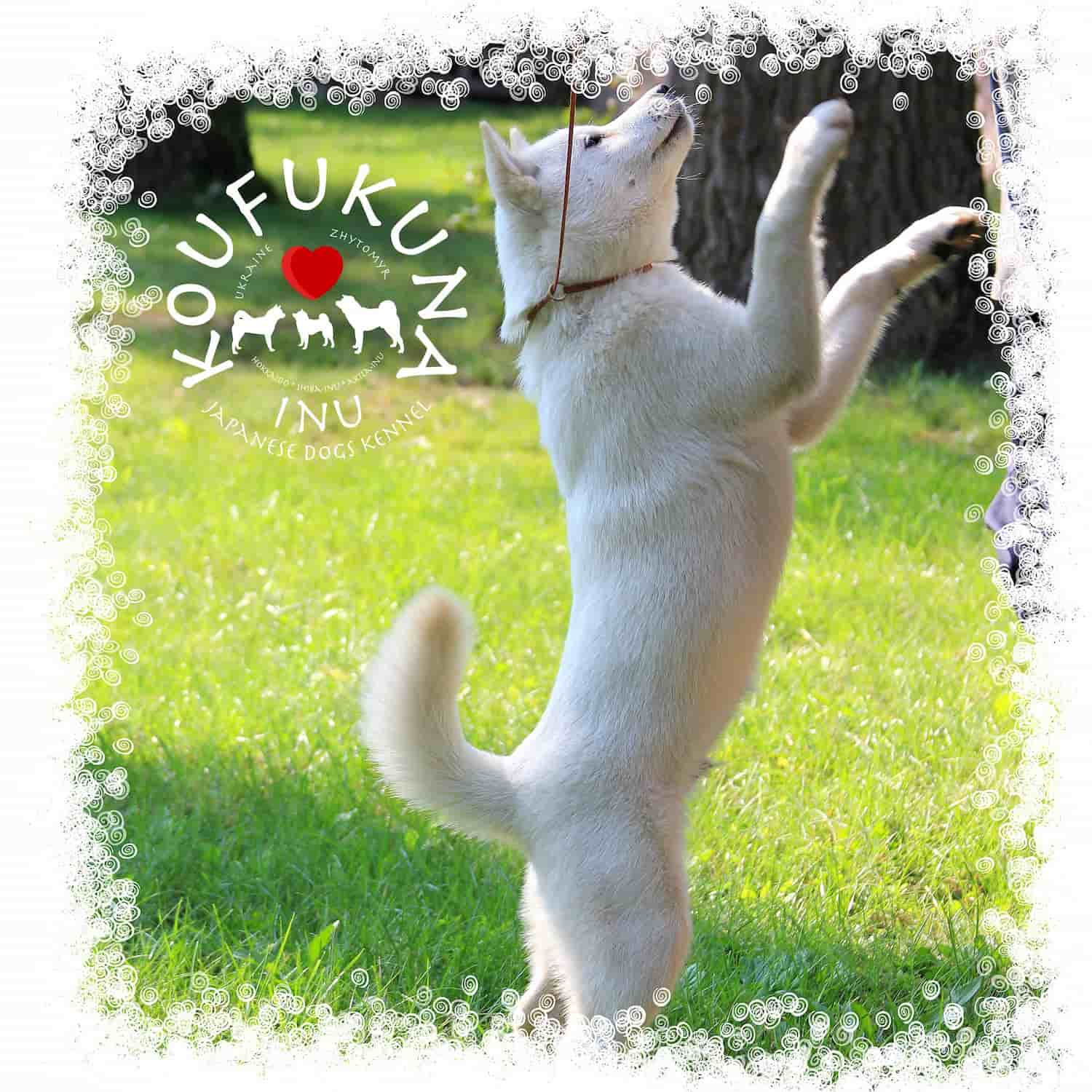
Hokkaido Dog - Upbringing, Training and Games
As far as training is concerned, it is safe to say that the Hokkaido dog belongs to a fast learning breed, but independent thinking. In other words, it is easy enough to teach him only if you can involve him in the process as a whole. This can be a problem given how independent and stubborn this dog really is. That's why it's so important to show yourself as the leader of the pack, tough and soft.
This may seem difficult to some, and therefore Hokkaido is recommended primarily to experienced owners.
In skillful hands, this smart dog will easily learn and remember even the most complex commands.
The key to success is to start training a puppy at the age of 7-9 weeks. To motivate Hokkaido to train, be sure to prepare some tasty treats in advance and try to be patient and calm as much as possible.
Hokkaido is intelligent and malleable in training, but can sometimes show independence, self-sufficiency, or disobedience.
Sometimes He may want to make sure that you are his Alpha.
Therefore, given his physical ability and character, Hokkaido is not recommended for novice owners or those who are unable to cope with permanent leadership functions.
If you do not start raising Hokkaido immediately, when he appeared in the house, in a few months you will get an arrogant and uncontrollable dog. It is almost impossible to wean him from bad habits and inappropriate behavior.
One of the first educational moments is training to the collar and leash. Freemen of Hokkaido will prefer walking without these accessories. But then the owner can find a pet a few kilometers from home. Ainu Ken may start a "hunt", for example, for a cat and run away, despite calls to stop.
To say that the wayward Hokkaido is difficult to train is wrong. These dogs perfectly understand what is required of them and love to learn. However, they do not always want to obey.
The Hokkaido dog will not fit a too harsh and aggressive parenting style. Ainu Ken will perceive such a person as an enemy and will run away at the first opportunity. Hokkaido must be trained patiently and persistently.
Positive reinforcement techniques work better with this dog, so never yell or bully Aina Ken (Hokkaido). Lessons should be short and interesting. More complex commands should be added gradually.
Aina Ken should be encouraged for success not only with affection and delicacy, but also with a game.
Hokkaido's play is different from that of other breeds: dogs can jump and crouch strangely, emitting intimidating barks and howls, which is often misinterpreted as aggression.
For this reason, Hokkaido is often considered to be animals kept on a leash only.
The Hokkaido breed has always been an active and energetic breed, and loves to be given "jobs" by their owners. In addition, since this breed loves to move outdoors, active and outdoor games are recommended: hiking, cycling, jogging, catching a ball, and so on.
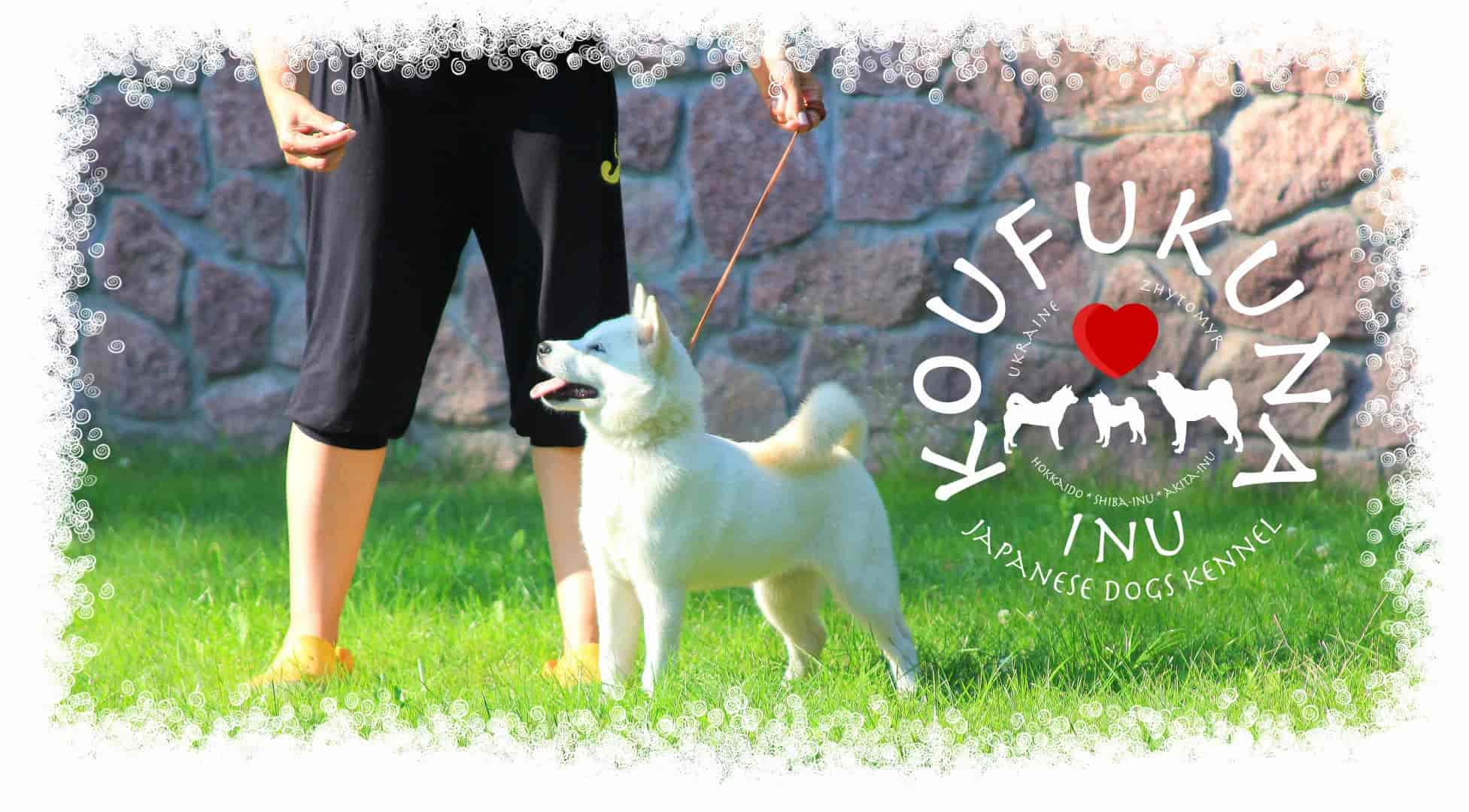
Mandatory socialization
Given the nature, physical abilities and hunting past, Hokkaido poses a certain danger to the surrounding people and animals.
This makes learning a necessity.
In addition, early socialization is key.
Involve other people in the learning process in such a way that Hokkaido understands that you and other people are dominant, and teach other animals as early as puppies.
Gradually introduce Hokkaido to children
Children should also be involved in the process of education and training, if they are between 10 and 12 years old, telling the dog what to do, treating it and rewarding it for success.
Younger children must participate in feeding the dog and getting in and out of the house so that Ainu-Kenne does not consider them subordinates.
Advise children to be kind and gentle with the dog and try to avoid loud noises or sudden movements when the dog is first socialized. This reduces the risk of children frightening or injuring the dog, as well as reacting aggressively to it.
All puppies are sometimes afraid of children. If you have a puppy, introduce the children gradually, allowing the dog to approach them when it is ready, and observe all interactions between the child and the dog.
With especially loud children, especially those who may live in more than one house with a dog, it is best to keep the Akita on a leash when she first starts interacting with children.
Health and Common Diseases
Hokkaido dogs are generally very healthy, and their average lifespan is around 13-15 years.
This is a disease resistant breed and can be said to be a stable breed with a relatively long lifespan.
However, some of them may be susceptible to hereditary and other common diseases, which, unfortunately, occur in other breeds of dogs.
That's why it's so important to maintain good care and get regular veterinary checkups.
A common problem in Hokkaido is sunstroke and the consequences of being in a hot and humid place for a long time, resulting in skin diseases and continuous shedding.
Hokkaido is absolutely disarmed from the heat and requires special conditions.
The dogs of Hokkaido lived in the harsh nature of Hokkaido, which is why they are characterized by thick and dense double coats. Often hair loss occurs during the summer molt, so careful care is required. If hair loss is not treated, skin diseases can develop.
Below we will talk about genetic diseases that can occur or develop in Hokkaido dogs. This does not mean at all that every puppy is at risk of getting sick with all of the following, we just think that you need to know this👇
It is known that not only Hokkaido dogs, but also breeds of dogs bred with close relatives often suffer from genetic diseases. Hokkaido dogs are no exception and can develop genetic disorders.
Collie Eye Anomaly (CEA)
This is a genetic disease of the eye that is often found in dog breeds: Border Collie, Rough Collie, Shorthair Collie, Shelty, Shetland Sheepdog, Australian Shepherd, Beagle, Dachshund, German Shepherd, Lancashire Hiller, Miniature Poodle, Whippet Longsher.
Collie eye anomaly is a disease in which the choroid surrounding the fundus becomes abnormal and the retina cannot be supplied with oxygen and nutrients. If the disease is mild, there are no special symptoms, but if it causes fundus hemorrhage or retinal detachment, it can cause serious visual impairment.
The severity and symptoms vary from patient to patient, from mild visual impairment to complete blindness. Unfortunately, there is no cure for this disease, and reasonable dilution is recommended to reduce the incidence in the population.
However, about a third of Hokkaido dogs are affected by collie eye anomaly, and 2/3 are carriers.
Now, before you look away from this dog, you should know that this is only a mild disease, rarely causing blindness.
However, if you want to avoid all risks, it is better to consult a breeder. Fortunately, CEA can be easily diagnosed in puppies as young as 6-7 weeks old.
Degenerative myelopathy (DM)
Degenerative myelopathy is a genetic disorder caused by a genetic mutation known to be common in German Shepherds and Pembroke Welsh Shepherds.
Degenerative myelopathy is thought to develop between the ages of 8 and 11 and is a disease in which paralysis progresses from the hind limbs to the front limbs, eventually leading to inability to breathe and death.
The disease is caused by impaired conduction of motor neurons of the spinal cord due to degeneration of nerve endings.
In the initial stages, the animal has a loss of coordination, then ataxia of the lower extremities develops. The duration of the disease in most cases does not exceed three years.
To diagnose DM, a genetic test has been developed that can be performed at any age. A DNA test detects a defective (mutant) copy of a gene and a normal copy of a gene.
Cataract
Cataracts, in which the lens becomes cloudy and vision deteriorates, are caused not only by aging, but by heredity and diseases such as diabetes. Unlike humans, cataracts in Hokkaido are more hereditary than age related, in which case they develop before the age of six.
When a cataract develops, the black eyes appear white because the lens becomes cloudy, and as it progresses it becomes difficult to see. In addition, when the disease becomes severe, glaucoma and uveitis can develop, so early treatment is necessary. Young people in Hokkaido can develop the disease after about a week, so regular eye checks from an early age are recommended.
Dementia
Talk to your veterinarian if your dog is behaving in a way you don't like.
According to an internal survey, 83% of Japanese dogs and their hybrids have dementia.
This disease can occur in any breed, but keep in mind that Japanese dogs, including Hokkaido dogs, have a higher chance.
Given the fact that there is no fundamental cure, it is important to identify and treat the disease at an early stage.
So it's a good idea to add stimuli and antioxidants to your life and Hokkaido life from time to time, such as regularly changing your walking path.
Osteoarthritis and Osteoarthritis
Osteoarthritis and osteoarthritis, common in older dogs, is a disease that damages the cartilage of joints and the tissues around them, causing symptoms such as pain and swelling. As development progresses, the joints deform. When osteoarthritis develops, symptoms such as reluctance to walk, not to run, not to jump, not to like stairs, to walk hard and to cover the legs appear. The exact cause is not clear, but obesity and excessive exercise are thought to affect the joints.
These debilitating orthopedic conditions have a known genetic component and can drastically reduce an animal's quality of life. Mobility problems and chronic pain often make the dog cope with daily mediation. Careful screening of breeding animals is essential to avoid passing these conditions on to future generations.
Any changes in behavior or appearance should be discussed with a veterinarian.
How to Feed Hokkaido: Nutrition, Treats, Supplements, Raw Food
Give Hokkaido food according to age and activity.
To maintain such a muscular body, a diet high in protein and low in fat is recommended.
Regardless of whether it is dry food or a homemade diet, the main ingredient in the Hokkaido diet should always be a reliable source of animal protein: chicken, turkey, salmon, duck, beef ...
Hokkaido nutrition is basically a complete dietary diet containing the nutrients necessary for the growth of a dog. In order to grow the strongest body of Hokkaido dogs, it is ideal to have a good balance of proteins and fats.
As your staple food, choose a complete diet designed to balance nutrition with just food and water.
Dogs need different amounts of each nutrient depending on their height and age. Give Hokkaido food appropriate for age and purpose, such as "puppies", "adult dogs", "senior dogs" and remember to control the weight.
A homemade diet gives the owner a sense of security: he understands what he gives, and it is also so pleasant to cook food while thinking about his dog. However, maintaining nutritional balance is not easy, so it is recommended to take supplements if necessary.
The amount of food needed for dogs of any breed, not limited to Hokkaido dogs, differs not only depending on the stage of growth, but even on temperature and humidity.
Be careful with weight gain, as this is an active dog breed, it is easy to become obese with little exercise, so it is recommended to choose the amount of food taking into account living conditions and the amount of exercise.
Feeding Hokkaido puppies an adult dog food or diet on a regular basis can cause irreparable harm.
There are different types of complex diets, for example, for puppies and for adult dogs, depending on the stage of growth. Puppies are prone to indigestion, so try to feed them gently. Soak dry food in cold or warm water and feed 3-4 times a day.
When the puppy becomes an adult dog, give her daily food, divided into two doses. The amount of food according to your weight, age and recommended dosage.
Most health problems can be traced back to the gut, so it's important to pay attention to a healthy and proper diet.
Hokkaido Food Tips
- Always provide fresh drinking water and do not forget to periodically wash dishes with food and water.
- When switching from a kennel food or introducing a new food, do so within one to two weeks. Gradually adding more and more of the new brand mixed with the old food until you are completely on the new food. This applies to all food transitions to avoid indigestion.
- Add treats or supplements gradually so your dog can adjust. It is also helpful when allergic reactions occur and allows you to quickly determine the cause.
- If you notice diarrhea in Hokkaido during the transition to another food, for immediate relief, try a special medicine and give only water for 24-48 hours until the loose stools disappear. When your dog regains his appetite, consider adding probiotics, such as plain yogurt, or suitable supplements to the bland diet. A soft diet may include boiled chicken breast and rice, cottage cheese, mashed fried yams (sweet potatoes) or canned pumpkin without sugar.
- Watch for any symptoms of allergies or food intolerances. Wheat, corn, and chicken are common allergens for many dogs.
- Keep an eye on the freshness of food and feed, especially those that use natural preservatives - vitamins E or C. Such food should be consumed within a limited time after opening, otherwise they will lose their freshness and value.
- Consult a veterinarian or canine dietitian if you intend to use homemade food or a raw food diet in Hokkaido to avoid nutritional deficiencies or gastrointestinal distress.
- Run your hand lightly over the ribs of Hokkaido, if the muscles are felt, then the dog is in good shape.
- Do not allow excessive consumption of treats or food for people.
Nutritional Supplements for Hokkaido
Before giving your Hokkaido dog any supplements, make sure they are recommended by veterinarians or canine nutritionists.
Supplements unnecessarily can be hazardous to Hokkaido's health.
If you are not sure about the dosage, consult your veterinarian!
Supplements are not needed if you provide Hokkaido with a fully balanced diet.
If nutritional balance is not maintained, supplements should be included in the diet.
Supplements should be taken in the following cases:
- Pregnancy Hokkaido
- Recovery after illness.
- Change in coat color.
- Sometimes it is necessary to include supplements in the diet during the puppy's growth period.
In general, your Hokkaido may need the following supplements:
- Vitamins C, E and A for skin health.
- B vitamins for energy and help manage stress.
- Vitamin D and calcium for bone health.
- Omega-3 fatty acids to fight inflammation and coat.
- Antioxidants for eye health.
Healthy skin and coat
Omega-3 supplements such as coconut oil, salmon oil, olive oil, or Omega oils in capsules.
Thyroid health
Supplements of iodine or other seaweed products. Algae has the added benefit of maintaining good oral hygiene and fresh breath.
Improving digestion
Probiotics such as yogurt, kefir or powders.
For diarrhea: Use a prebiotic (not to be confused with a probiotic), unsweetened canned pumpkin puree, or low-sodium (or no) canned green beans.
For constipation: mashed roasted yams (sweet potatoes), green beans, unsweetened canned pumpkin puree, or low-sodium (or no) canned green beans.

Chewy treat for Hokkaido
Let's chew the treat only under supervision.
Make sure you give the appropriate sized piece for the dog's size, and remove the treat before it gets small enough that the dog doesn't choke on swallowing.
Experiment with what your dog likes and use common sense.
Puppy-safe chew treat:
- Dehydrated vegetables.
- Dry meat sticks (hooligan or ruby sticks)
- A treat based on dehydrated meat: tendons, trachea, jerky, rabbit ears, duck feet.
- Watch out for fat! Some treats, such as pig's ear, may be too fatty for young puppies.
Chewy treat for Hokkaido in which adult teeth have sprouted (approximately 5 months)
- Split horn of an elk or deer. Buy those that have a large area of exposed bone marrow.
- Edible gummies can add unnecessary calories in the form of carbohydrates, so use with caution.
- Ice cubes, fruits and vegetables as a treat. Some puppies enjoy chewing on ice cubes, apple wedges and carrots, especially when teething due to the hard and cold texture.
- Your dog may also like cucumber slices, seedless, green beans, baked sweet potatoes, steamed broccoli, etc.
Don't worry if your dog refuses to eat his fruits and vegetables. It is more important to know the foods to avoid due to toxicity.
If you are using a workout treat rather than a chew treat, keep these treats small and easy to chew and swallow as you will be giving them frequently, especially in workout mode. Try to often reward several small treats instead of one large bite to celebrate excellent behavior.

Hokkaido Breed Standard
Everyone knows how the Japanese appreciate the beauty of the original, caring for and preserving it for future generations. In this sense, Hokkaido, being one of the oldest Japanese breeds, is no exception.
When the fate of all Japanese dogs was threatened, the Japanese community took measures to preserve and restore them, as a result, a single document was developed, the standard for all Japanese dogs, which in 1934 outlined the framework for all subsequent standards.
The Japanese Dog Standard was formed in 1934 by the Nihonken Hozonkai Japanese Conservation Society (NIPPO). According to the standard, dogs are divided into three sizes: small, medium and large. Hokkaido classified as medium Japanese dogs.
The Japanese Dog Standard is written concisely and precisely, to some extent, is an esoteric scripture that determined the form and content of all six native dogs of Japan.
Even now, Japanese experts claim that the original standards for Japanese dogs have not changed. Only details have been added to help judges and breeders better understand breed standards, which will then aid their efforts to restore and improve the Japanese Ying.
Today, most major kennel clubs and organizations have their own official Hokkaido breed standard.
However, if you read these manuals, it becomes clear that, in fact, they are derived from the main Japanese standard.
👇Below we publish the FCI International Hokkaido Breed Standard.
 |
|
OriginJapan
|
|
Date Of Publication Of The Official Valid Standard30.10.2016
|
|
UtilizationHunting dog, companion.
|
|
FCI-ClassificationGroup 5. Spitz and primitive type.
|
|
Brief Historical SummaryThis breed is said to have originated from medium-sized Japanese dogs that accompanied migrants from Honshu (the main island of Japan) to Hokkaido during the Kamakura era (in the 1140s), when exchanges were developing between Hokkaido and the Tohoku District. When the breed was designated as a « natural monument » in 1937, it took an the name of the area. It also came to be known as the « Ainu-ken », since the Ainu-the former inhabitants of Hokkaido-used to breed these dogs for hunting bears and other animals. The physique of the Hokkaido enables it to withstand severe cold and heavy snowfalls.
|
|
General AppearanceMedium-sized dog with sexual dimorphism strongly marked, well balanced, sturdily built and well boned. Muscles tough and clean cut.
|
|
Important Proportions
|
|
Behaviour / TemperamentDog of noteworthy endurance, showing dignity and naive feeling. The temperament is faithful, docile, very alert and bold. It also shows accurate judgement and great stamina.
|
|
HeadCRANIAL REGION:
FACIAL REGION:
|
|
EyesNearly triangular, not too small, and dark brown in colour.
|
|
EarsSmall, triangular, slightly inclining forward and firmly pricked.
|
|
NeckPowerful and muscular, free from dewlap.
|
|
Body
|
|
TailSet on high, thick and carried over the back vigorously curled or curved like a sickle, the tip nearly reaching hocks when let down.
|
|
LimbsFOREQUARTERS:
HINDQUARTERS:
|
|
Gait / MovementActive, quick, light and resilient.
|
|
Coat
|
|
Size And WeightHeight at withers: Males 48,5 - 51,5 cm. Females 45,5 - 48, 5 cm.
|
|
FaultsAny departure from the foregoing points should be considered a fault and the seriousness with which the fault should be regarded should be in exact proportion to its degree and its effect upon the health and welfare of the dog.
|
|
Disqualifying Faults
|
|
N.B.:
The latest amendments are in bold characters.
|
|
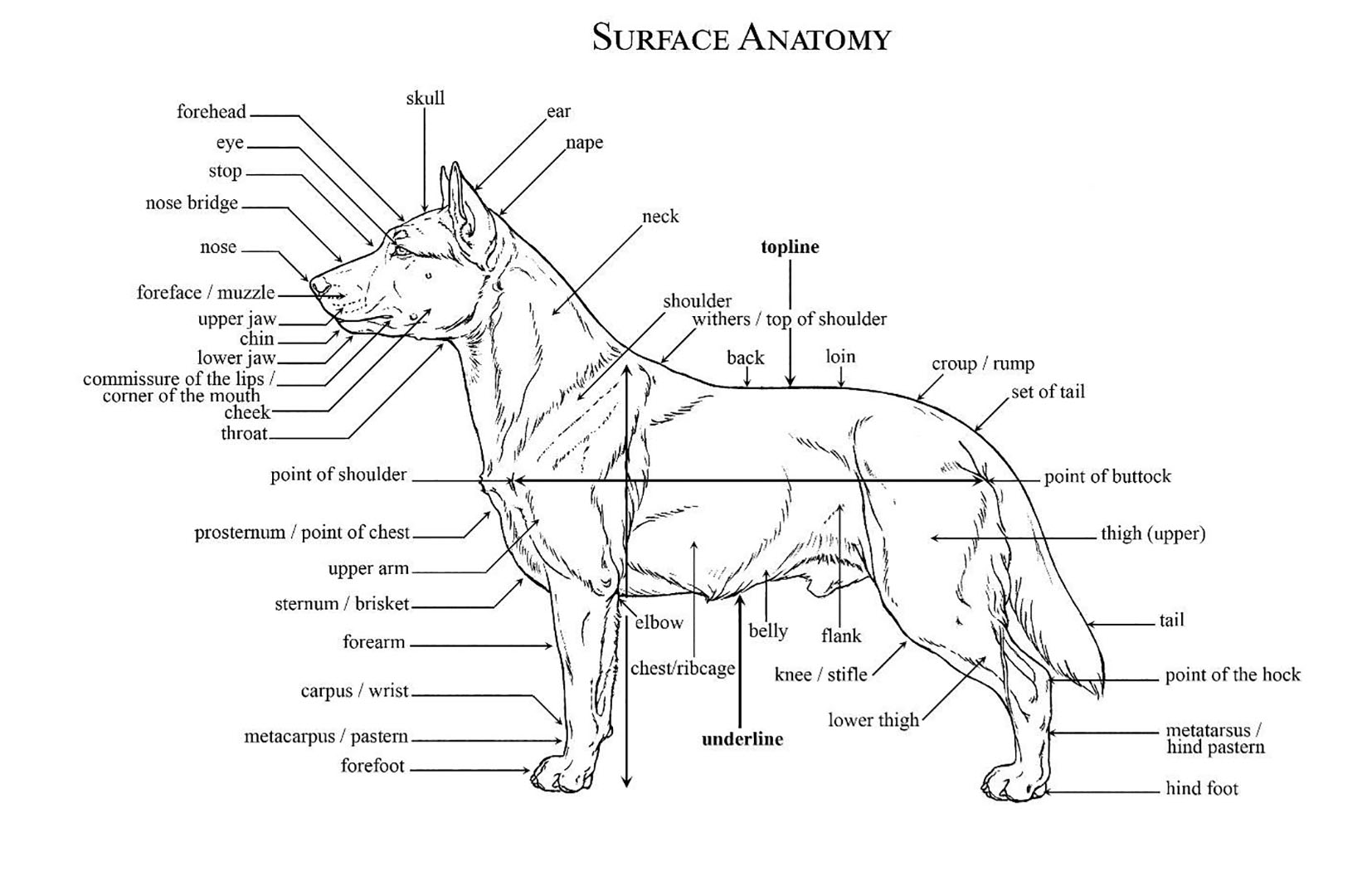 |

How to buy a Hokkaido puppy?
In our kennel KOUFUKUNA❤️INU you can order and purchase a Hokkaido puppy from titled parents. We breed Japanese breeds: Akita Inu, Hokkaido and Shiba Inu. 👉 More about our Kennel.
In most cases, a puppy is bought with a pre-booking in future litters of the parents. 👉 How is the purchase of Puppy.
To purchase a Puppy, it is enough to place an order on the website or contact us in any convenient way: Viber, WhatsApp, Facebook Messenger, Instagram Direct. You will receive all the necessary advice and answers.
In most cases, we sell puppies after booking, but there are cases when Puppies are sold on availability, such puppies have separate pages on our website with their own price and photos and descriptions.
